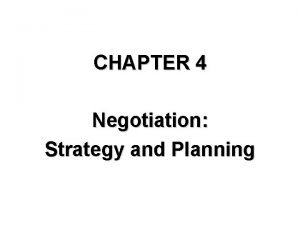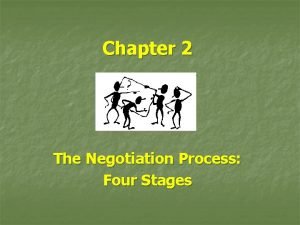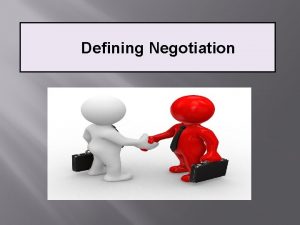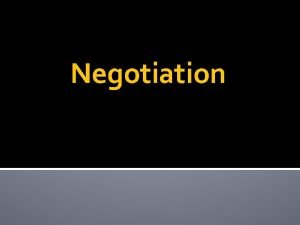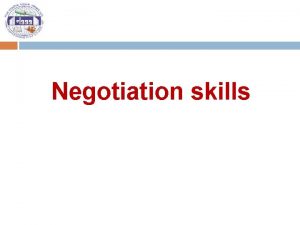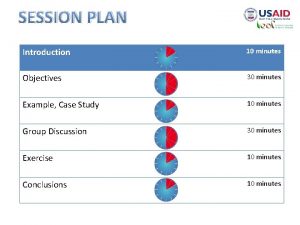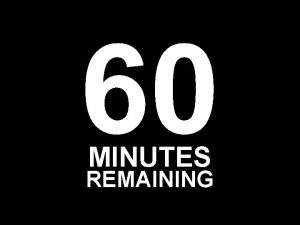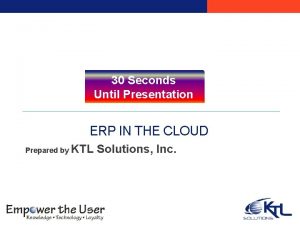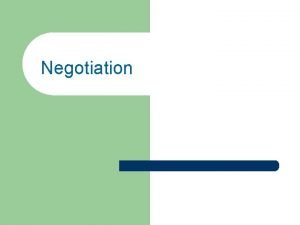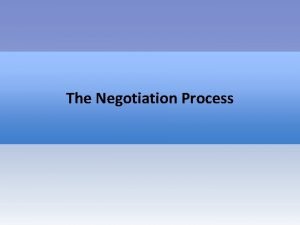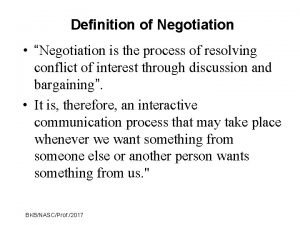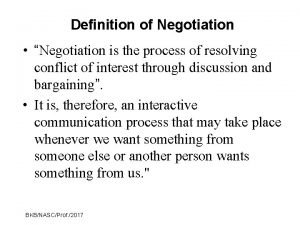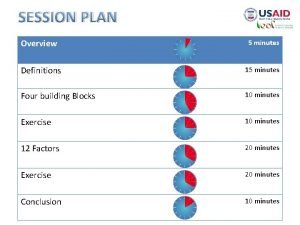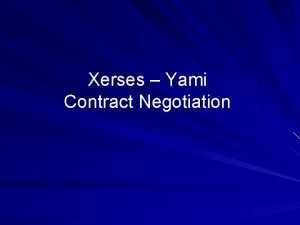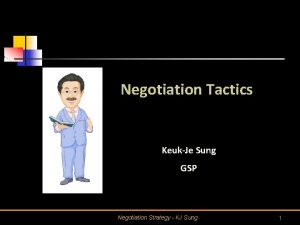SESSION PLAN Introduction 5 minutes The negotiation process








































- Slides: 40

SESSION PLAN Introduction 5 minutes The negotiation process 40 minutes Prioritizing and sequencing implementation actions 25 minutes Capacity and resource needs to implement 20 minutes § Types of negotiations § Positions and interests § Class exercise § Integration, political and regulations, Stakeholder roles and responsibilities, Capacity and resources, prioritization and implementation “packages” § Class Exercise § Implementation Costs § Revenue sources from successful implementation

Low Emissions Land Use Planning Development Team Acknowledgements Name Affiliation David Saah; Co-Lead University of San Francisco, SIG Name Affiliation Phan Xuan Thieu Vinh University, Vietnam Mohd Zaki Hamzah; Co-Lead University Putra Malaysia Chalita Sriladda USAID-LEAD Khamla Phanvilay, Co-Lead National University of Laos Hoang Thi Thu Duyen Vietnam Forestry University, Vietnam Cao Thuy Anh Dalat University, Vietnam Ladawan Puangchit Kasetsart University, Thailand Chalermpol Samranpong Chiang Mai University, Thailand Do Anh Tuan Vietnam Forestry University, Vietnam Pham Thanh Nam USAID LEAF Vietnam Lyna Khan Royal University of Phnom Penh, Cambodia Peter Stephen USAID LEAF Bangkok Le Ba Thuong Vietnam Forestry University, Vietnam Hoang Vinh Phu Vinh University, Vietnam Napat Jakwattana University of Phayao, Thailand Vipak Jintana Kasetsart University, Thailand Nur Anishah Binti Aziz University Kebangsaan Malaysia Kulala Mulung PNG University of Technology Ratcha Chaichana Kasetsart University, Thailand Sureerat Lakanavichian Chiang Mai University, Thailand Somvilay Chanthalounnavong National University of Laos Thavrak Huon Royal University of Agriculture, Cambodia Vongphet Sihapanya National University of Laos Athsaphangthong Munelith USAID LEAF Laos David Ganz USAID LEAF Bangkok Attachai Jintrawet Chiang Mai University, Thailand Chi Pham, Project Coordinator USAID LEAF Bangkok Chanin Chiumkanokchai USAID LEAF Bangkok Kent Elliott US Forest Service Lam Ngoc Tuan Dalat University, Vietnam Beth Lebow US Forest Service Mark Fenn USAID Vietnam Forests & Deltas Geoffrey Blate US Forest Service

Low Emission Land Use Planning (LELUP) Section 4. Negotiating and prioritizing implementation plan Overview Regional Climate Change Curriculum Development

LELUP Framework MONITORING & EVALUATION 4. 3 Implementation Needs 4. 2 Priorities & Sequence Implementation Activities 4. 1 Negotiate Agreement on Options NEGOTIATING & PRIORITIZING IMPLEMENTATION PLAN ENABLING ENVIRONMENT Low Emission Land Use Planning ANALYSIS OF FUTURE OPTIONS ASSESSMENT OF CURRENT CONDITION

NEGOTIATING & PRIORITIZING IMPLEMENTATION PLAN 4. 1 Negotiate Agreement on Options 4. 2 Priorities & Sequence Implementation Activities 4. 3 Implementation Needs

Learning Objectives At the end of Section 4, learners will be able to: § Recognize the importance of a negotiated process and a process to reach agreement between different stakeholders; § Define some of the important issues in prioritizing and sequencing implementation actions; § Identify ways to assess implementation needs.

Session Outline Introduction The negotiation process § Types of negotiations § Positions and interests § Class exercise Prioritizing and sequencing implantation actions § Integration, political and regulations, Stakeholder roles and responsibilities, Capacity and resources , Prioritization and implementation ‘packages’ § Class exercise Capacity and resource needs to implement § Implementation Costs § Revenue sources from successful implementation

NOW Drivers of Change Overview Scenario 3 + / BAU dition n o C t n e r r u C Past Trend / Scenario 2 Goal / Objective Scenario 1 + / - Time/Space Rules of the Game M&E +/-

Negotiations and Agreements Timber production Who we are working with? Water Hunting & NTFPs Infrastructure Quantity What are their needs? Spirit development Conservation Forests Agriculture Expansion Will there needs be met by the LE LUP? Climate change Negotiation processes between multiple stakeholders, often with conflicting needs, to reach agreement on land use

What is a Negotiation? § Describe a negotiation that you have recently been involved in? § What do you think a negotiation is?

What is a Negotiated Agreement? “Negotiations are a form of decision-making in which two or more parties talk with one another in an effort to resolve their opposing interests”

Types of Negotiations Negotiation can be: 1. 2. Distributive § Confrontational § Adversarial § win–lose Integrative/Consensual § Principled based § Interest-based § Relatively cooperative.

Objectives of a Negotiated Process § Support a collaborative, mutually supportive relationship for ongoing problem solving; § Focus on interests over positions § Develop agreements § Obtain commitment from the constituents of the groups; § Decide on how to monitor the agreements.

What is Consensus? In a consensus-based process, people work together to develop an agreement that is good enough, but not necessarily perfect, for everybody to be willing to accept

Finding Consensus Moving from set positions to exploring underlying interests and needs Stakeholders will become involved in a LUP if they believe their underlying interests are to be achieved, addressed or satisfied.

Positions and Interests Position Stakeholder A Stakeholder B Interests Mutual interests Interests

Consensual Negotiations: Summary § Separate the people from the problem § Concentrate on interests and not on positions § Develop options that benefit both sides § Insist on using some objective criteria for evaluation of the options

Consensual Negotiations: Summary

Class Exercise § Provide the selected role play and ask students to read their roles. Once they are comfortable with their roles, ask the students to start the negotiation process. § At the end of the negotiation, ask questions such as: § How many agreements were reached? What were they? § Did you define your joint interests? § What strategies did you use and what were effective? § What could you improve next time?

Moving Agreements into Operational Plans Key Assessment Criteria Linked to Objectives Scenario 1 Scenario 2 Scenario 3 Employment Biodiversity Forest Cover Water GHG Emissions +++ -- - - + + - - ++ ++ - ++ Which scenario is right? How do we reach agreement on the best one?

Moving Agreements into Operational Plans- What is Required?

Moving Agreements into Operational Plans A Strong Agreement Substantive Comprehensive Agreement POLICY? IMPLEMENTTORS? Permanent Final PRIORITIZE OPTIONS Non-conditional IMPLEMENTATION Binding

Moving Agreements into Operational Plans

Moving Agreements into Operational Plans – Key Issues 1. Integration with other planning processes 2. Political Support and Legal Frameworks 3. Stakeholder Roles and Responsibilities 4. Capacity and Resources 5. Activity Prioritization 6. Implementation ‘Packages’

Moving Agreements into Operational Plans – Key Issues 1. Integration: What is required to integrate the Low Emission Plan into ‘normal’ planning processes and cycles?

Moving Agreements into Operational Plans – Key Issues 2. Political Support and Legal Frameworks Is there political support and a policy or regulatory framework to guide implementation

Moving Agreements into Operational Plans – Key Issues 3. Stakeholder Roles and Responsibilities Have roles and responsibilities been assigned to the correct implementation stakeholders

Moving Agreements into Operational Plans – Key Issues 4. Capacity and Resources Do the local institutions and organizations have the resources and capacity to implement?

Moving Agreements into Operational Plans – Key Issues 6. Implementation ‘Packages’ Can feasible ‘implementation packages’ be allocated to stakeholders or sectors?

Moving Agreements into Operational Plans – Key Issues 5. Activity Prioritization What actions provide immediate impact? What actions must be implemented for further actions to be implemented?

Moving Operational Plans into On-Ground Actions- What is Required?

Implementation Needs for ‘Users’ § The capability of a ‘User’ or ‘Deliver Agent’ to implement a low emission land use plan is generally assessed against 6 functions: § Knowledge, further broken into: § Awareness § Understanding § Skills § Attitudes (and Aspirations) § Technology § Resources

Moving Plans into On-Ground Actions – Connections are Needed! Enabling Institution en es Sp ec if Ta icat rg io et n o s f pr Re P M erfo ea rm su a re nc m e en t n tio ta ed Fe ba ck Delivery Agency Participation Contacts User

The Costs of a Low Emission Plan Implementation • • • Land use planning Land tenure / governance reform Forest protection, improved forests and agriculture management Job training Administration Transaction • REDD+ Program development • Agreement negotiation • Emission reduction certification (measuring, reporting, verification: MRV) • Stabilization, prevention deforestation moving to other countries (stop leakage)

Who Pays the Costs Cost Opportunity Implementation Transaction ‘User’ (Individuals) Delivery Agency Enabling Institutions Depends Implementation costs may be incurred by a ‘User’ – much of the implementation can be done on a voluntary basis and this cost is important to understand

Where Does the Money Come From? Business as Usual Reference Level t. CO 2 e Emissions Performance (Carbon Credits for sale) Emissions with Low Emission Plan (Change in Efficiency) Historical Emissions (Actual Emissions) Start Low Emission Plan Years -10 Today -5 5 10

Who Pays? Public Private Bilateral International Climate Initiative (Germany) Carbon Markets Multilateral UNFCCC-mandated Funds Other Multilateral Climate Funds and Programmes Compliance Investments (Domestic/FDI) Voluntary (OTC) Ecosystem Services Norway’s International Climate and Forest Initiative Global Environment Facility (GEF) Climate Investment Funds (CIFs) Kyoto Mechanism Verified Carbon Standard (VCS) Producing industry Environmental Transformation Fund (UK) Adaptation Fund (AF) Forest Carbon Partnership Facility (FCPF) EU-ETS Climate Action Reserve (CAR) Processing industry Hatoyama Initiative (Japan) Least Developed Countries Fund (LDCF) UN-REDD Programme American Carbon Registry Other Bilateral Financing Special Climate Change Fund (SCCF) Other Multilateral Financing Gold Standard

Historical Price Distribution (Forest Carbon) 2010 average prices was $5. 5/t. CO 2 e 2011 average price was $9. 2/t. CO 2 e 2012 average price was $7. 8/t. CO 2 e

TAKE HOME MESSAGES § Positive negotiations will lead to a harmonious agreement (or plan) § Actions to implement the plan have to be prioritized. Political, regulatory, capacity, stakeholder roles, resources and activity links will all influence sequencing of actions. § Capacity and resource needs will need to be identified and overcome. § Up-front costs MAY BE compensated through a market mechanism.

References § FAO (2005) Negotiation and Mediation Techniques for Natural Resource Management § Means, K. , Josayma, C. , Neilsen, E. and Viriyasakultorn, V. (2002) Community-Based Forest Resource Conflict Management, A Training Package, Volume 2, RECOFTC, Bangkok § Source: http: //www. fao. org/docrep/005/y 4301 e 00. HTM § Wehrmann, B. (2011), Land Use Planning. Concepts, Tools and Applications, February 2011, Published by GIZ, Eschborn, Germany. § Forest Trends’ Ecosystem Marketplace (2013), Covering New Ground - State of the Forest Carbon Market 2013, § Stephen, P. and Triraganon, R. (2009), Strengthening Voices for Better Choices: A capacity needs assessment process. Gland, Switzerland: IUCN.
 60 minutes to seconds
60 minutes to seconds Sample topics for lac session
Sample topics for lac session Negotiation strategy plan
Negotiation strategy plan 5 stages of negotiation
5 stages of negotiation Triangle talk in a sourcing negotiation process
Triangle talk in a sourcing negotiation process 5 stages of negotiation process
5 stages of negotiation process How to make session plan
How to make session plan Hình ảnh bộ gõ cơ thể búng tay
Hình ảnh bộ gõ cơ thể búng tay Slidetodoc
Slidetodoc Bổ thể
Bổ thể Tỉ lệ cơ thể trẻ em
Tỉ lệ cơ thể trẻ em Gấu đi như thế nào
Gấu đi như thế nào Chụp phim tư thế worms-breton
Chụp phim tư thế worms-breton Bài hát chúa yêu trần thế alleluia
Bài hát chúa yêu trần thế alleluia Các môn thể thao bắt đầu bằng tiếng đua
Các môn thể thao bắt đầu bằng tiếng đua Thế nào là hệ số cao nhất
Thế nào là hệ số cao nhất Các châu lục và đại dương trên thế giới
Các châu lục và đại dương trên thế giới Công của trọng lực
Công của trọng lực Trời xanh đây là của chúng ta thể thơ
Trời xanh đây là của chúng ta thể thơ Mật thư tọa độ 5x5
Mật thư tọa độ 5x5 Phép trừ bù
Phép trừ bù độ dài liên kết
độ dài liên kết Các châu lục và đại dương trên thế giới
Các châu lục và đại dương trên thế giới Thể thơ truyền thống
Thể thơ truyền thống Quá trình desamine hóa có thể tạo ra
Quá trình desamine hóa có thể tạo ra Một số thể thơ truyền thống
Một số thể thơ truyền thống Cái miệng nó xinh thế chỉ nói điều hay thôi
Cái miệng nó xinh thế chỉ nói điều hay thôi Vẽ hình chiếu vuông góc của vật thể sau
Vẽ hình chiếu vuông góc của vật thể sau Thế nào là sự mỏi cơ
Thế nào là sự mỏi cơ đặc điểm cơ thể của người tối cổ
đặc điểm cơ thể của người tối cổ Thế nào là giọng cùng tên? *
Thế nào là giọng cùng tên? * Vẽ hình chiếu đứng bằng cạnh của vật thể
Vẽ hình chiếu đứng bằng cạnh của vật thể Phối cảnh
Phối cảnh Thẻ vin
Thẻ vin đại từ thay thế
đại từ thay thế điện thế nghỉ
điện thế nghỉ Tư thế ngồi viết
Tư thế ngồi viết Diễn thế sinh thái là
Diễn thế sinh thái là Dot
Dot Số nguyên là gì
Số nguyên là gì Tư thế ngồi viết
Tư thế ngồi viết


